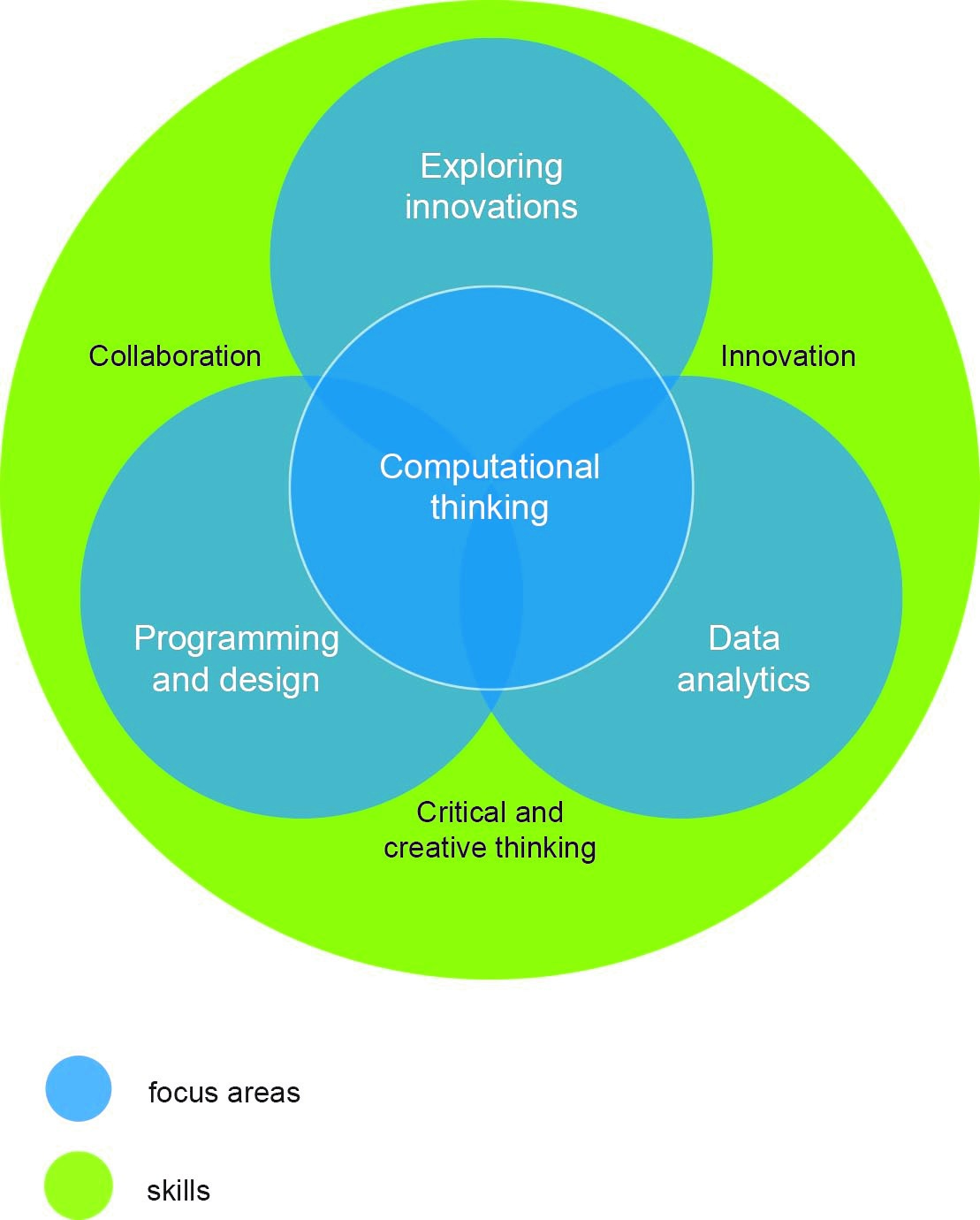Stage 2 | Subject outline | Version control
Digital Technologies
Stage 2
Subject outline
Accredited in November 2016 for teaching at Stage 2 from 2019.
Stage 2 | Subject outline | Content
Content
Stage 2 Digital Technologies is a 20‑credit subject that consists of the following focus areas:
- Focus area 1: Computational thinking
- Focus area 2: Design and programming
- Focus area 3: Data analytics
- Focus area 4: Iterative project development.
Students study all four focus areas.
The focus areas are not intended to be taught independently. They are not necessarily designed to be of equivalent length — teachers may allocate more time to some than to others — and they may be sequenced and structured to suit individual cohorts of students.
Computational thinking underpins the learning in this subject. In applying their computational thinking skills, students apply logical steps to identify and deconstruct problems that are of interest to them, recognise patterns through abstraction, design algorithms, and create innovative digital solutions.
(Note: a digital solution may be implemented by the student or may be a working prototype or proof of concept.)
Computational thinking skills are applied in each focus area.
In Focus area 1: Computational thinking, students develop and extend their computational thinking skills and strategies to identify, deconstruct, and solve problems of interest. These strategies include pattern recognition, abstraction, and algorithm design. In Focus area 2: Design and programming, students analyse a problem, and design, write the code for, test, and implement a solution. In Focus area 3: Data analytics, students analyse data sets in order to understand a problem, test a hypothesis, and draw conclusions from which to make decisions. In Focus area 4: Iterative project development, students scope problems, plan a project, clarify project features, and develop and evaluate appropriate code.
Pivotal to student learning is the development of the capabilities and, in particular, the skills for creativity, collaboration, and innovation.
Digital Technologies provides a range of contexts for students to extend their creative dispositions and skills in exploration, generation, design, and creation. They generate and explore problems of interest and actively seek answers to questions posed by the problem. In extending their creative thinking, students challenge assumptions and critically evaluate information relating to problems of interest. They imagine possibilities and make connections in their learning to generate, develop, and refine ideas, and to determine solutions. With initiative, imagination, and perseverance, students scope, design, and create innovative solutions to problems of interest.
Students work collaboratively to problem‑solve and create innovative digital solutions to problems of interest. Collaboration enables students to develop their social and cognitive skills and ways of combining the knowledge and skills of group members to solve problems effectively as a team. Students extend and apply their personal and social capability as they actively engage with and respect the different perspectives of others. Students work together in interconnected ways as they move between activities and contribute to and complete activities begun by others. Through collaboration students make connections in their critical and creative thinking, decision‑making, and problem‑solving. Collaboration may include the use of synchronous and/or asynchronous digital communication strategies.
Innovation in Digital Technologies includes students generating and articulating original ideas, creating new processes, products, and solutions, and designing solutions that improve existing ideas, processes, and products. Students extend the range and combination of skills that enable them to contribute to innovation in digital solutions. These skills encompass academic, technical, and soft skills, and the ability to apply these skills and knowledge to solving unfamiliar problems. Students work independently and/or collaboratively to generate ideas and create innovative solutions and creative products. They extend their skills in critical and creative thinking and problem‑solving, and make connections in their learning across disciplines to generate ideas and create innovative digital solutions. In the pursuit of innovation students increase their willingness to take risks and appreciate the value of learning from what does not work, as well as from what does work, as they scope and design innovative solutions.
The following is a diagrammatical representation of the integration of the focus areas and skills.

